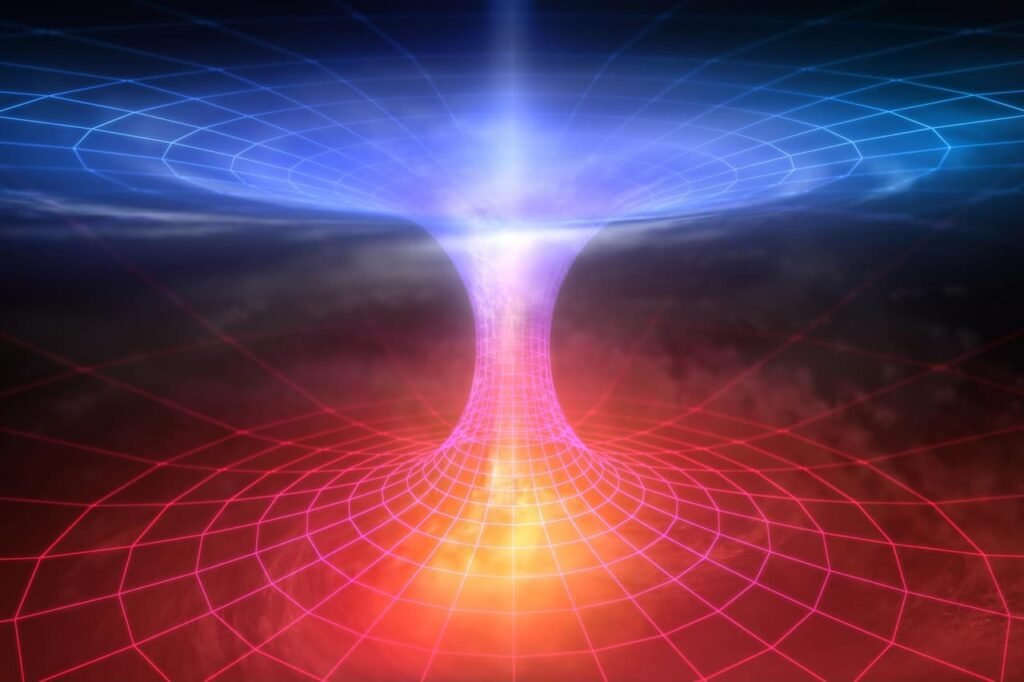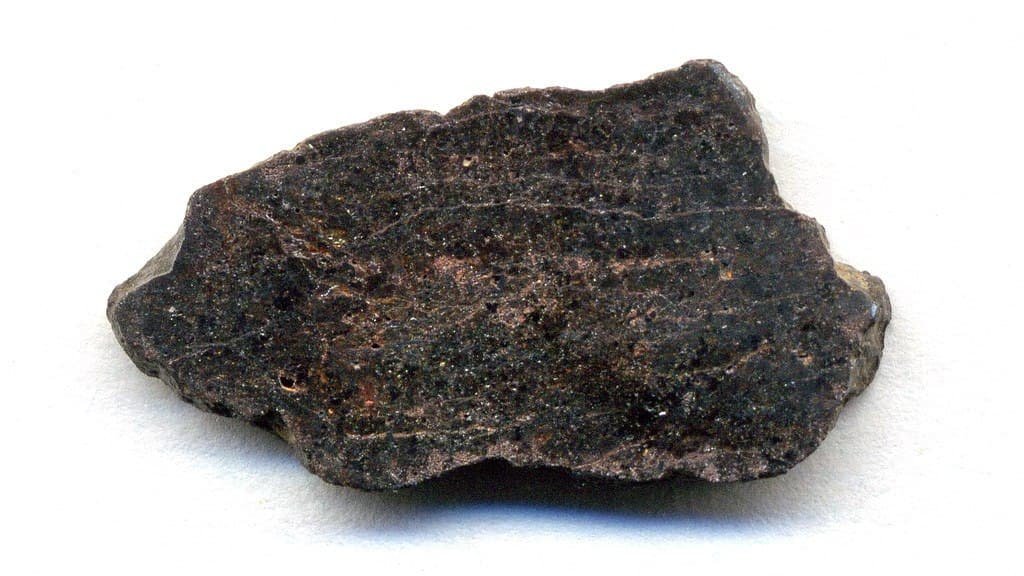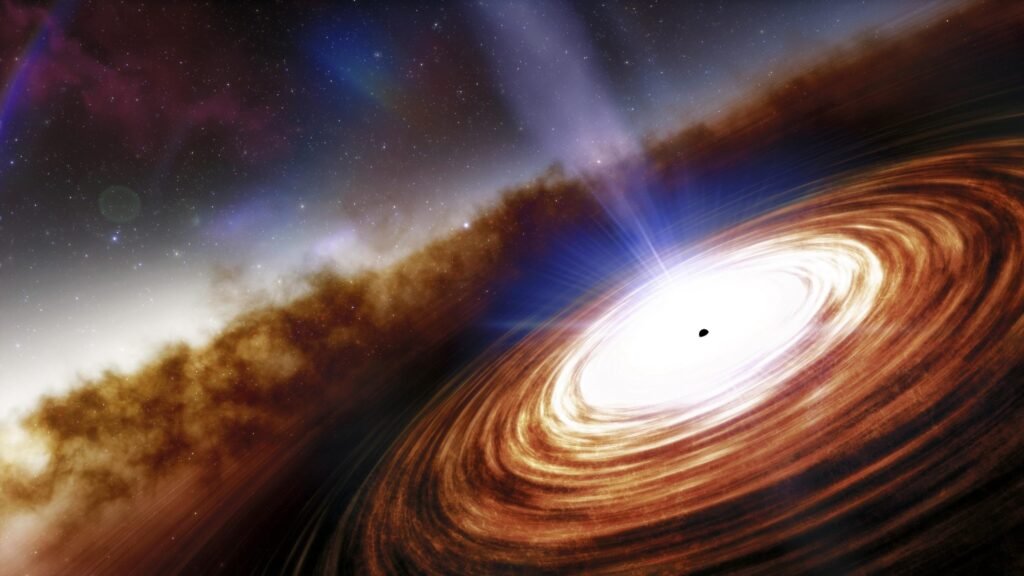Space Story 1 – Supermassive Blackhole detected in motion
Task of finding a supermassive black hole is quite easy in theory but catching it in reels is pretty difficult. They are expected to wander around in space but where, is non-answerable till before this. The team started their search by surveying ten distant galaxies and the supermassive black holes at their centers.
They focused their research on black holes with water in their accretion discs, which are spiral structures that rotate inward towards the black hole. When the water orbits the black hole, it creates a maser, which is a laser-like pulse of radio light.

Masers can help calculate a black hole’s velocity very precisely when analysed with a combined network of radio antennas using a technique known as very long baseline interferometry (VLBI), according to Pesce. Nine of the ten supermassive black holes were found to be at rest using this approach, but one stood out as being in motion.
Space Story 2 – Wormholes Are True
Many science fiction films feature wormholes, which are used to connect two distant points in space. Wormholes, like black holes, appear in Albert Einstein’s general theory of relativity equations, which were published in 1916. Einstein’s theory states that the universe has four dimensions, with three spatial dimensions and a fourth dimension of time.
They merge to form spacetime, which can be extended and curved by large objects like stars, similar to how a rubber sheet can be curved by a metal ball sinking into it. Spacetime’s curvature defines how objects such as spaceships and planets, as well as light, move within it. According to previous models, the only way to hold the wormhole open is to use an alien type of matter that has a negative mass, or weighs less than zero, and only exists in theory.

However, in their model, Blázquez-Salcedo and his colleagues Dr. Christian Knoll of the University of Oldenburg and Eugen Radu of the Universidade de Aveiro in Portugal show that wormholes can be traversed without matter.
Space Story 3 – Scorching Hot Planet Spotted
Astronomers have discovered a potential scorching-hot planet orbiting Vega, one of the sky’s brightest and most well-known stars. The candidate alien planet is around the size of Neptune and is very similar to Vega, but it still needs to be confirmed by follow-up observations or studies. The alleged planet takes only 2.5 Earth days to complete one orbit around its sun.

Space Story 4 – Meteorite – Older Than Earth
Last year, a meteorite that fell in the Sahara Desert was dated at 4.56 billion years old, making the volcanic rock older than the Earth, which is 4.54 billion years old. The rock, dubbed Erg Chech 002 (EC 002) after the Algerian location where it was found, is a rare artefact from a protoplanet — a large body of matter in orbit around the Sun or another star that is thought to be evolving into a planet — that formed when the solar system was just 2 million years old.

Space Story5 – Quasar – Powerful Radio Jets Emitter
Quasar is the one shooting out powerful radio jets which is the newly discovered substances from the early universe.

Quasar, called P172+18 has been recently discovered by astronomers using the European Southern Observatory’s (ESO) Very Large Telescope (VLT). It takes about 13 billion years for the light from this quasar to reach Earth, depicting the vast distance between the two. It dates back to the time when the universe was just 780 million years old. Although this quasar is not the farthest but is the most distant radio-loud quasar or radio jet-emitting quasar.
